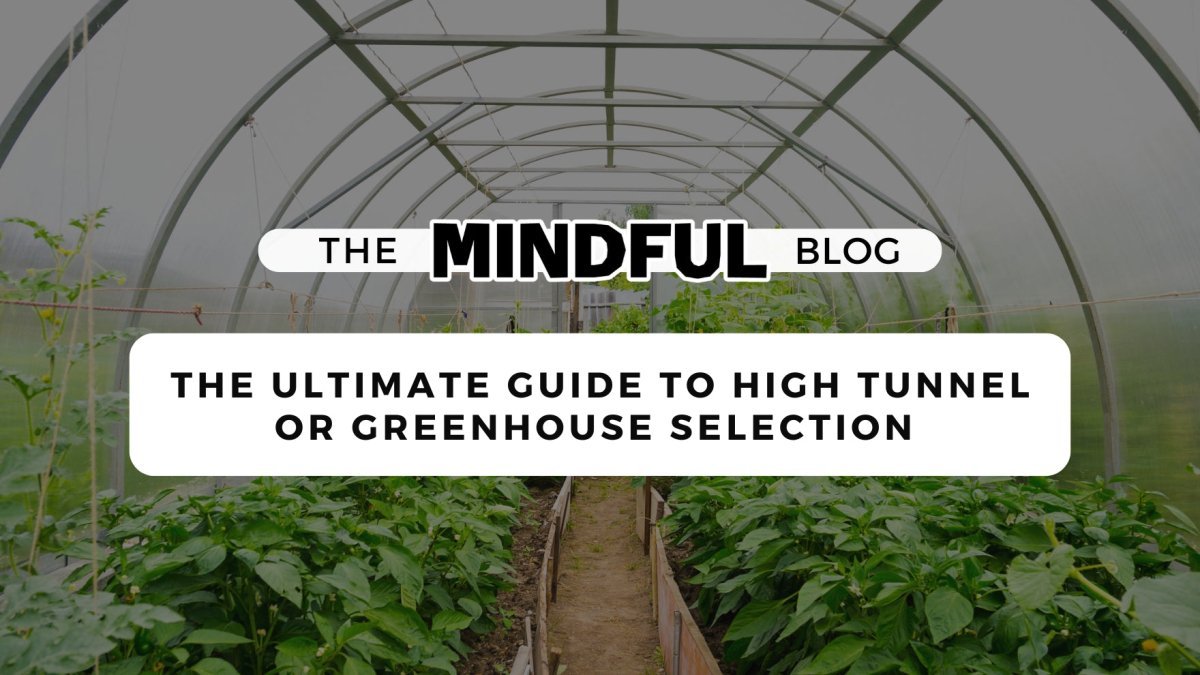
When it comes to optimizing your garden or farm, choosing between a high tunnel and a greenhouse can feel overwhelming. Both structures provide year-round growing opportunities, but each serves different needs. This guide will break down the similarities and differences, helping you make an informed decision that aligns with your goals.
We’ll also explore how the NRCS EQIP program can help you fund your high tunnel or greenhouse project, making sustainable gardening more accessible for growers of all scales. Let’s dive in and simplify your decision-making process.
The Role of High Tunnels and Greenhouses
Both high tunnels and greenhouses create controlled environments to protect plants from extreme weather and pests while extending the growing season. These structures are invaluable for seed starting, boosting crop yields, and enhancing overall productivity.
Whether you’re a backyard gardener, a homesteader, or a large-scale farmer, incorporating one of these structures can transform your growing operation by increasing efficiency and reducing risks.
Key Differences Between High Tunnels and Greenhouses
Though they serve similar purposes, high tunnels and greenhouses differ in how they create and maintain ideal growing conditions. Here’s a closer look:
Greenhouses
Greenhouses are climate-controlled structures equipped with active heating and cooling systems. This makes them ideal for maintaining precise temperatures and humidity levels year-round.
- Best for: Farmers needing nursery-like environments for starting plants or growing crops that require strict temperature regulation.
- Example: On a five-acre organic farm I managed, we relied on a 30’ x 36’ greenhouse for year-round production.
- For backyard gardeners: A full greenhouse is often unnecessary. I manage my 1,200-square-foot garden with a simple wire rack, grow lights, and soil blocks, starting 1,000 plants efficiently without the need for climate control.
High Tunnels
High tunnels, also known as hoop houses, rely on passive solar heating. A plastic covering traps heat, creating a microclimate for plants. Ventilation is managed through roll-up sides or fans.
- Best for: Extending the growing season by 1-2 months and providing cost-effective climate adjustment.
- A useful guideline: Each layer of plastic shifts your growing zone by one step south. For example, a single-layer high tunnel can move you from Zone 6 to Zone 7, while adding another layer can push you to Zone 8.
- Why choose a high tunnel: They’re practical, affordable, and simpler to manage than greenhouses, making them perfect for growers seeking to maximize yield without extensive infrastructure.
How NRCS EQIP Can Help
The NRCS EQIP (Environmental Quality Incentives Program) provides financial and technical support to farmers looking to implement sustainable practices, including high tunnels and greenhouses.
- Benefits: Covers costs for structures that meet specific conservation guidelines. Many farmers find their high tunnels fully funded through EQIP.
- Why it matters: By participating in this program, you’re not only improving crop productivity but also supporting environmental stewardship.
To see if you qualify, visit the NRCS website or contact your local extension office. At Mindful Farmer, all our high tunnels meet NRCS specifications, ensuring you’re eligible for cost-share funding.
The Mindful Farmer Advantage
At Mindful Farmer, we specialize in high tunnels designed for growers of all scales:
- Backyard gardeners: Compact and efficient solutions tailored for small spaces.
- Homesteaders and small farms: Versatile options that adapt to diverse growing needs.
- Larger farms: Greenhouse-style setups for operations on 5-10 acres.
Our kits are easy to assemble, ship nationwide, and meet NRCS specifications. If you’re in Arkansas, we offer professional assembly services to make setup even easier.
Harvesting Success
Choosing between a high tunnel and a greenhouse depends on your unique needs. Both offer incredible opportunities to boost efficiency, extend your growing season, and improve crop health.
With Mindful Farmer’s thoughtfully engineered structures and the support of programs like NRCS EQIP, sustainable farming has never been more accessible. Together, we can help you create a thriving, resilient garden or farm.
Not sure where to start? Book a consultation and let's plan it together!
